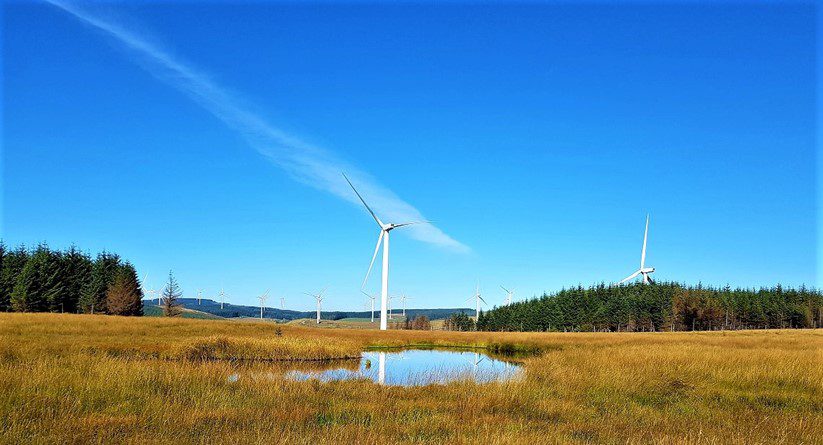The upland landscape between Neath Port Talbot and Rhondda Cynon Taf has a wealth of natural assets, which if managed correctly, can have a big impact on our contributions to the climate and nature emergencies declared by nations around the world – including the Welsh Government.
Within this vast area of wilderness lies the most southerly interconnected upland deep peat resource of any significant size in Wales – one of the largest areas of its type in the UK.
Peatland management is crucial in the world’s approach to achieving its carbon goals – and for good reason. They are amongst the most carbon-rich ecosystems on Earth, storing around 25% of total soil carbon while only occupying 3% of the global land area.
In the UK, approximately 10% of the land area (2.6m hectares) is covered in peat. Around 20% of these peatbogs are in a near-natural state, with the remaining 80% being modified or damaged.
Peatlands in good condition act as a carbon sink – locking in vast amounts of carbon formed over millennia – and they can also reduce flood risk, improve water quality, support biodiversity and have a net cooling effect on climate.
However, when peatlands are damaged, they actually become a significant carbon emitter. It is therefore vital to assess the peatlands we have and determine how best to restore them. This is typically done by focusing on the hydrology of an area, and through restoration works the ‘re-wetting’ of peatlands will allow them to return to their natural state.
Renewable energy is also a key theme for COP26. Vattenfall’s Pen y Cymoedd Wind Farm is the largest onshore wind farm in England and Wales. Its 76 turbines have a total installed capacity of 228MW which produce enough fossil free power for 188,000 homes annually, around 15% of Welsh homes.
Alongside extensive forestry and vast areas of habitat that support some of our most threatened and endangered wildlife, the area can truly be classed as a major hub for carbon sequestration, renewable energy production and wildlife conservation.
The Lost Peatlands of South Wales Project is funded by National Lottery Heritage Fund and is currently being delivered by a partnership between Neath Port Talbot Council, Rhondda Cynon Taf Council, Natural Resources Wales, Swansea University and Coed Lleol (Small Woods).
The project – with Vattenfall and its Pen y Cymoedd Wind Farm as a key stakeholder and contributor – will be restoring up to 250 hectares of peatlands in the landscape above the upper Afan Valley and upper Rhondda Fawr while also actively managing 491 hectares of natural habitat for biodiversity in its project area.
Peatland restoration works are underway within the wind farm habitat management area, with more scheduled at other sites over the coming winters through to 2024.
Cllr Annette Wingrave, Neath Port Talbot Council’s Cabinet Member for Streetscene and Engineering said: “As well as supporting local habitats, the Lost Peatlands project will encourage local residents and visitors to enjoy, appreciate and engage with this important landscape and see afresh why this area was once known as the ‘Alps of Glamorgan’”.
Frank Elsworth, Vattenfall’s Head of Market Development UK for Onshore Wind said: “The transition to net zero has so many benefits, including wind farms enabling improvements to the natural environment through their habitat management plans.
“The Lost Peatlands Project and the Habitat Management Plan at Pen y Cymoedd Wind Farm will restore this beautiful landscape and important wildlife habitat, benefitting both the climate and local communities.”
You can find out more about the project’s work and how you can get involved through online social media (@LostPeatlands) or by contacting [email protected].









Leave a Reply
View Comments